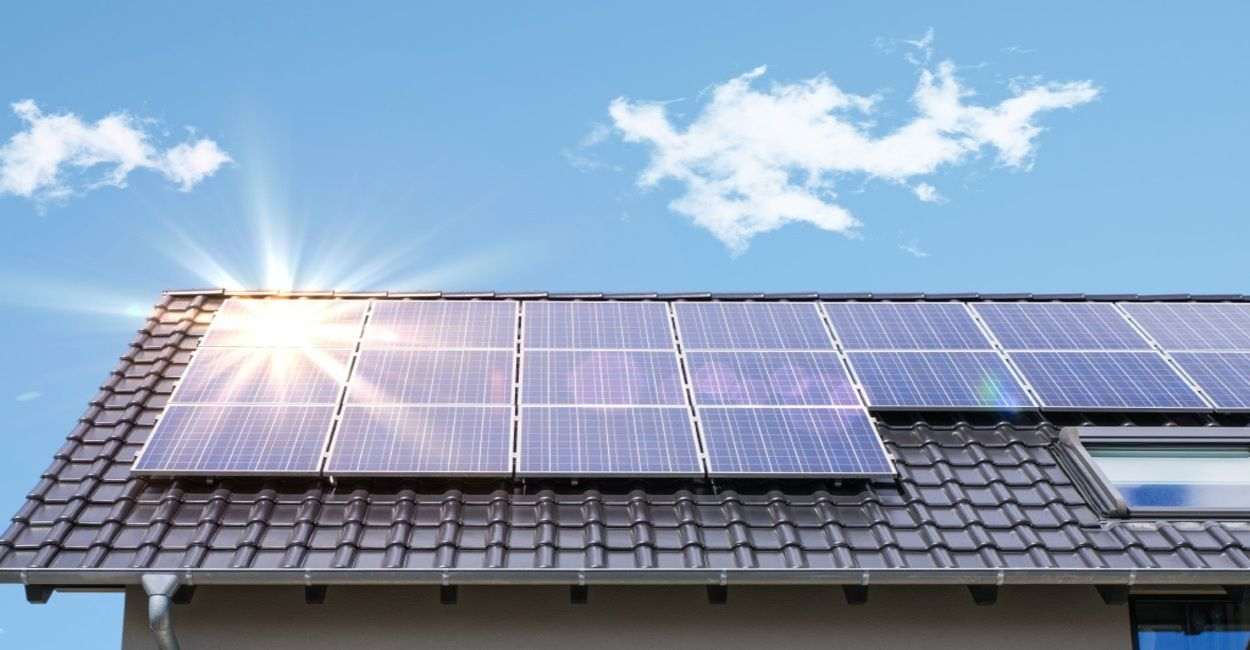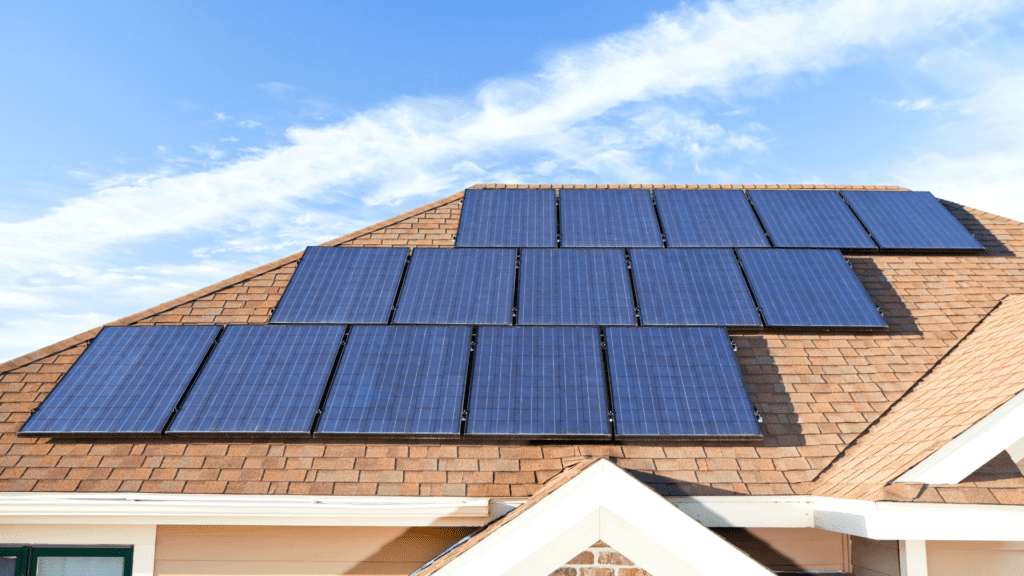Solar Panel Output Exceeds Energy Input Over 100 Times.

The installation of solar panels in the home can help in availing numerous advantages that include lower electricity bills, a reliable energy source, and increased home value. The installation of solar panels in your home is a worthwhile investment in the long run. But, as with any significant investment, smart homeowners usually wonder about the queries like how long are these solar panels going to last?
Like any other technical equipment, the solar panels also wear down over time and may require replacement and maintenance. The good news about the context is that, however, they degrade very slowly and can produce electricity even decades later! But it does not give a single impact on the lost efficiency of the panels as it goes on. There are two main reasons for the degradation of solar panels. The primary one is continuous exposure to the sun’s ultraviolet rays that cause degradation in the solar cells, which decreases the power output of the system. The second reason includes various factors like weather that may cause damage to the solar panels. These factors are typically covered under the solar panel warranty.
What Is The Solar Panel Degradation Curve Rate?
Over time, solar panels lose their ability to absorb sunlight and convert it into solar energy. The power is much affected by the reasons of hotter weather and the natural reduction in chemical potency within the panel. Have you ever wondered what the “degradation rate” is?
The lower the degradation rate, the better the panel will be. When a solar panel has a lower degradation rate, it will produce more energy over its lifetime.
Degradation rates vary from one brand to another. A higher-quality panel has a lower degradation rate as compared to lower-quality panels. This is essential to keep in mind when making a solar panel comparison that it might make more sense, in the long run, to spend more money on higher-quality panels.
How Does Solar Panel Degradation Calculation Work?
The term degradation is defined as the loss of power produced relative to the rated power. To calculate the annual degradation percentage of solar panels, first of all, you need to be aware of the annual kWh production of the system. This can be measured and recorded using a photovoltaic production meter.
As an example, let’s assume the following scale of the solar system:
Year Production
1 101,017 kWh
2 99,669 kWh
3 99,268 kWh
4 98,785 kWh
5 98,314 kWh
Assuming all other variables are kept constant, the annual degradation is the percent difference between each year’s production.
Year 2 degradation = 100*(101,017 - 99,669) / 101,017 = 1.334%
Year 3 degradation = 100*(99,669 - 99,268) / 99,669 = 0.402%
Year 4 degradation = 100*(99,268 - 98,785) / 99,268 = 0.487%
Year 5 degradation = 100*(98,785 - 98,314) / 98,785 = 0.477%
This is said to be the most accessible way to calculate degradation. Whereas other equipment in the system may degrade over time, weather patterns may also influence production.
Different solar panel manufacturers offer different types of warranties for their products. For instance, Solaria claims to facilitate a performance loss no greater than 2.5% for the first year and 0.7% thereafter. When testing for degradation, PV module manufacturers utilize standard testing conditions (STC is 1000 W/m2, 25oC, and air mass 1.5). This enables accurate degradation calculation.
How Strong Are Solar Panels Against Hail?
Fortunately, due to the rigorous industry standards, solar panels undergo extensive testing for improved durability during extreme weather conditions before manufacturers introduce them. Thus, these days solar panels are highly resilient against heavy winds, rain, and hails.
Apart from being hail-proof, solar panels are generally weather-resistant. As a result, they can handle most weather-related stress without collapsing. This is due to a panel’s highly durable glass and aluminum casing.
Best Solar Panels For Cloudy Days As Per The Reviews Of 2022
Modern solar panels have been designed in such a way that they can perform effectively regardless of the weather. The best solar panels for cloudy days are technologically advanced that can store enough energy for your consumption. That is one of the main reasons why the use of solar panels has increased over the years. Here in this article, we will look into the top five best solar panels that you can use during cloudy days.
Rich Solar 200 Watt 12 Volt Monocrystalline Solar Panel
This is one of the best monocrystalline solar panels with the property of high efficiency and a significant component of the solar power (PV) system. It is equipped with quick-connect cables that pave the way for fast and simple connection. The panel can produce power of up to 9.8-amp, which is accompanied by a 12-volt battery charge.
This Monocrystalline Solar Panel is designed with top-notch transmission anti-reflective coated tempered glass that ensures the durability of the panel. There is no doubt that the anodized aluminum frame is sturdy and robust. Due to low light performance on cloudy days, the performance of the solar panel is excellent, and its ability to bear the challenging weather is also great.
Bougerv 180 Watts Monocrystalline Solar Panel
Monocrystalline solar modules in this panel contain high conversion efficiency enabling each unit to produce the topmost power output. This solar panel features multiple layers of a protective system where the solar energy chips preserve effective solar energy conversion. This 180 Watt Solar Panel can charge a 12V battery effectively once the wiring is done on the solar panels.
This solar panel is easy to install; the panels also contain pre-drilled holes attached at the back of the panel for fast connection without requiring heavy tools. The bypass diodes are pre-installed to guarantee adequate power during low light conditions. It also comes with a sturdy panel that is capable of handling the load of the snow and high wind, making it quite durable. This is also enhanced by the corrosion-resistant aluminum material that withstands the prevailing outdoor weather for long service.
Renogy 100 Watt 12 Volt Eclipse Monocrystalline Solar Panel
This Eclipse 100-Watt Monocrystalline Solar Panel has characteristics of high-efficiency cells that enhance module efficiency. This Eclipse 100-Watt Monocrystalline Solar Panel bypass diodes operate effectively to reduce power drop brought about by shade to maintain exceptional performance, especially in low-light areas. The amazing encapsulation material has multi-layered sheet laminations that improve cell performance.
It is one of the best 100-watt solar panels that contain a positive output tolerance to withstand snow loads and high winds. The solar is designed with a corrosion-resistant aluminum frame that guarantees durability and is ideal for outdoor usage. There is low iron tempered glass, which is anti-reflective and highly transparent, making it impact-resistant due to its stiffness. The IP65-rated junction box available on this solar panel protects the layer from environmental particles and low-pressure water jets.
ITODOS 2 Pack Solar Panel Compatible With Arlo Pro 2, 11.8Ft Outdoor Power Charging Cable, And Adjustable Mount
The iTODOS 2 Pack Solar Panel provides a continued power supply directed to your surveillance cameras and has an outdoor power charging cable. This panel comes with a waterproof design making it ideal for any weather and low-temperature protection design. The downside of this solar panel only works with Arlo Pro 2 and not Arlo Pro3 or Arlo Ultralights.
The surface made of monocrystalline silicon material made it remarkable, sturdy, dustproof, low, and high-temperature proof. This solar panel can withstand any weather conditions; this makes it one of the best solar panels for cloudy weather. Apart from this, these panels are easy to install. They have 360 degrees of flexibility that you can easily adjust depending on the season.
The output of the solar panel on a daily basis in India
Before we start with the calculation, go through these certain terminologies
- Watt and kilowatt are units of power. Watt and kilowatt are the rates at which power is consumed by a device. For instance, a 100-watt TV will consume power at a rate of 100 watts per hour. 1 kilowatt = 1000 watts.
- Kilowatt-hour is the actual energy consumed by the device in an hour. For instance, a 100-watt TV running for 24 hours consumes 100 watts x 24 hours = 2400-watt hours or 2.4-kilowatt hours of electricity.
In a country like India, we receive an average of 5 sun hours in a day, so the total power generated by 1kW of solar is 1 kW x 5 hours = 5 kilowatt hours (KWH).
This is an ideal figure which considers uniform solar irradiance throughout the day, proper installation with the best orientation, angle of tilt, and no shadow impact on solar panels for 5 hours without any dust accumulation on the surface.
If we calculate for ideal conditions, then on average monthly power generation from solar panels, we will be getting 5 KWH X 30 Days = 150 kWh of electricity.
But not all days are equal; some days we will get sunlight, some days we won’t, some days the panel will be clean, and some days they won’t be; hence we will assume a 20% loss of power which gives an average daily generation for 1 kW solar panels to be 4 kWh of electricity and monthly generation is going to be 120 kWh of electricity.
It is a fact that 1 kW of solar panel has 3 PV panels each of 330 Wp; hence each solar panel generates 1.33 kWh of electricity in a day which is equal to 40 kWh of electricity in a month.

Can We Increase The Output Efficiency Of Solar Panels?
There’s no way to increase the solar panel output and efficiency of a solar panel. What we can do is measure the performance of the solar panels. This can be achieved by performing routine cleaning. Dust, debris, and snow can decrease the efficiency of the panels, so cleaning is a must.
What is the Maximum Output Of Solar Panels?
The factors influence the production of energy by solar panels.
The maximum amount of electricity can be produced by the system under ideal conditions (such as the ‘peak sun’).
Sometimes called ‘rated capacity’ or ‘rated output,’ this is taken to be 1,000 watts (or 1 kW) of sunlight for every square meter of the panel.
Most domestic solar panel systems have a capacity of between 1 kW and 4 kW.
Conclusion
The design of the solar panels has the capability to handle hailstorms, and they have also been tested as per the industry standards to withstand hails. Yet, hails can damage solar panels in some rare cases when the hailstorm is extremely severe.

